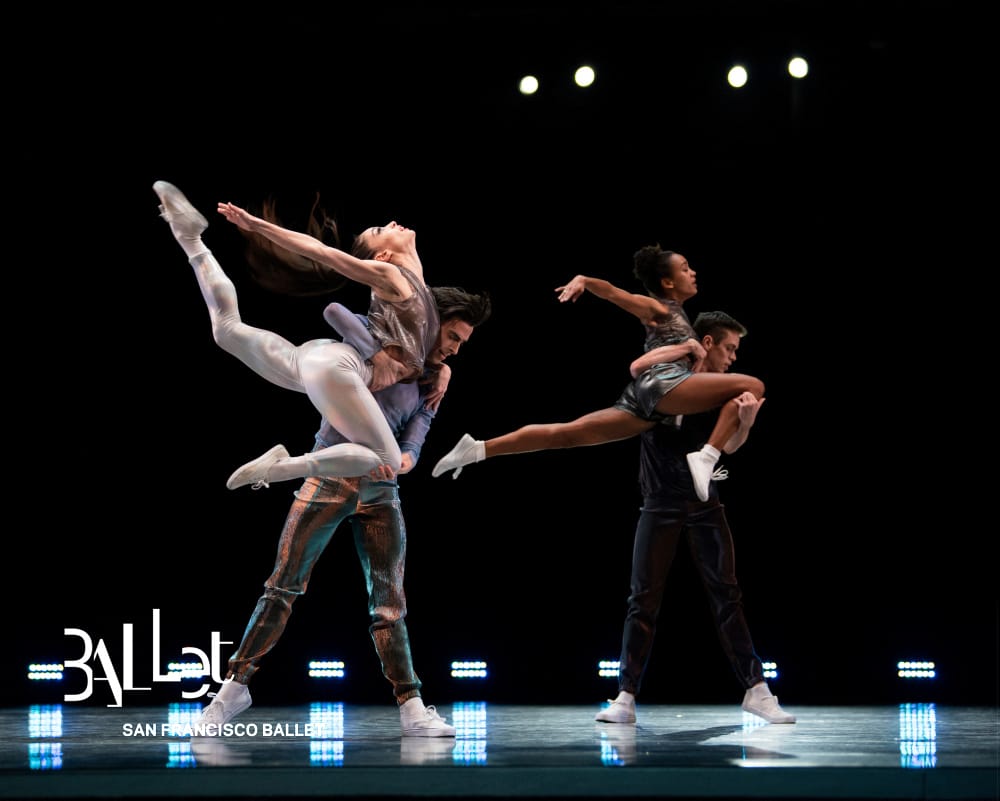SFB at Eighty-Six

SFB Gala: This is Passion
San Francisco Ballet
War Memorial Opera House
San Francisco, CA
January 23, 2019
Sometimes I think it would be desirable if American ballet companies would receive secure support from our national government, including pensions for everyone involved, the way they do in many other countries, France and Finland, for instance. But then, we might not have had San Francisco Ballet’s recent Gala, at the opening of its 86th season. And that would have been a pity. This year’s finely curated evening by experienced programmer Helgi Tomasson had everything you wanted in such a fun and necessary evening: it was packed with an appreciative audience, tightly scheduled — a bare two hours — lacked the most obvious crowd pleasers. It started with an excerpt from a mid-twentieth century Danish work and ended with two twenty-first century pieces, one of them a world premiere. It was an evening to be treasured — even if some of the details escaped me.
The finale from Harald Lander’s 1948 “Etudes” opened the evening. It did what the piece is supposed to do: show a superbly disciplined, classically trained company at the height of its technical ability — spacious big dancing, fleet, fast foot work, disciplined corps work that embraced geometry, one of classicism’s anchors. But the piece only makes sense as the culmination of what goes before: a gradual increase of the complexity of a dancer’s training. The airborne Sasha De Sola with Aaron Robison and the ebullient Ulrik Birkkjaer shone. The music, orchestrated Czerny etudes, however well played, is simply dreadful.
The title of “Unsaid” by the Australian-born dancer Danielle Rowe, currently SFDancework’ s Associate Artistic Director, is a misnomer. This world premiere actually said quite a lot, impressing with the clarity of its intentions and the easy use of a multi-lingual vocabulary. Given a topnotch performance by Sofiane Sylve and Aaron Robison to a quasi-pop score by Ezio Bosso for piano and cello (Natal’ya Feygina and Eric Sung), “Unsaid’s” darkness strongly contrasted with the rest of the program. The two black-clad dancers, only illuminated by spots, traced several theatrical conventions. It took the Pas de Deux’s essence, male/female relationships, and considered it as an ambivalent, equally weighted but failed courtship. Literal gestures balanced huge extensions, lifts -- even a small female/male one -- and collapses, supports and rejections. Its sense of drama had an almost Grahamesque quality to it. “Unsaid” seemed to dig into an existentialist fatality if the term can still be used. The audience loved it.
The other “new” work, the excerpt from Justin Peck’s “Hurry Up, We’re Dreaming”, which in its entirety premiered at last Spring’s SFB Unbound series, focused attention on this choreographer’s intriguing co-existence of pedestrian movements and ballet. Everyone performed in sneakers, walking, running, avoiding collisions in what to me still looks like an underground subway station. The energy was that of rush hour that here nevertheless offered some space for intimacy. In the three duets, performed by the original cast with Elizabeth Powell taking the place of Sarah Van Patten dancing with Luke Ingham, the explosive Gabriela Gonzalez and the scintillating Dores André more than challenged partners Birkkjaer and Joseph Walsh.
The Pas de Deux from “Rubies” and the Pas De Trois from “Agon,” both to Balanchine inspiration Igor Stravinsky, showed his choreographic genius in pieces so different and yet so related in the musicality and the rigor of their structure. In “Rubies” Vitor Luiz responded in kind to Ana Sophia Scheller’s spunk and elegance. Benjamin Freemantle etched the Sarabande in “Agon" as if he chiseled it into the air but he never underplayed its wit. These over fifty-year-old works looked more contemporary than anything else on the program.
Tomasson revived the Pas de Deux from his 1989 remarkabley fresh and congenial “Handel — A Celebration” for Mathilde Froustey and Tiit Helimets, both of them refined, often somewhat reserved dancers. Theirs is a good match. The other Tomasson work, “Soirées Musicales,” to some splendidly melodic Benjamin Britten, was entrusted to the always shooting for bravura impact Angelo Greco and the impressively responding guest performer from Boston Ballet, the petite Misa Kuranaga.
The excerpt from Yuri Possokhov’s “Diving Into the Lilacs” showcased one more time the extraordinary liquidity and strength of his muse, Yuan Yan Tan, strongly partnered and appreciated by Carlo Di Lanno. As ever, but always appreciated, Martin West conducted SFB’s musicians.
copyright © 2019 by Rita Felciano



